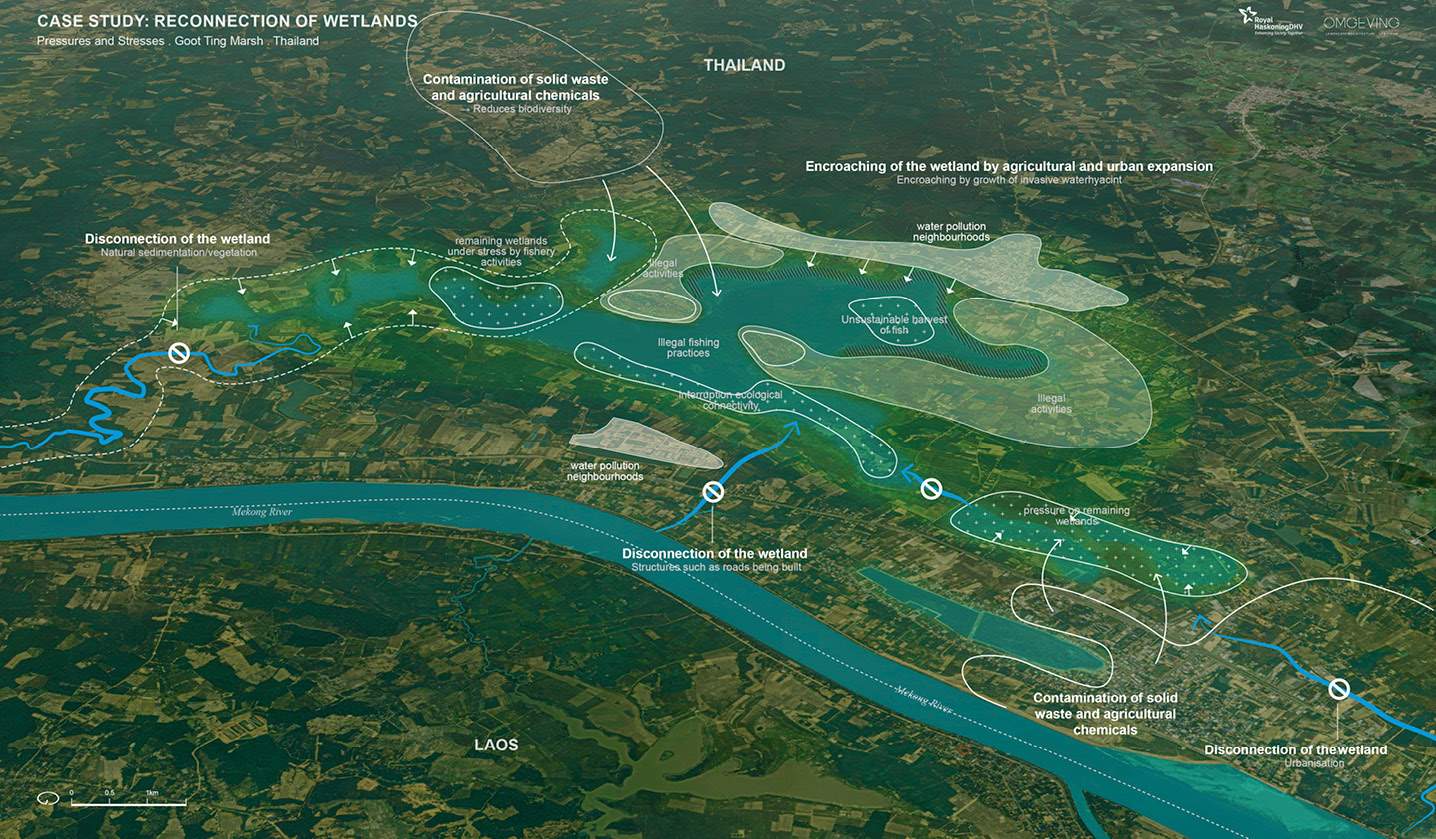Stress & Pressure
Large areas of Lao and Thailand were previously considered wetlands. These wetlands were crucial sources of water and food, providing rice, fish, and waterfowl, and supporting the livelihoods of millions of people. However, in recent decades, land development has increased, resulting in the construction of numerous reservoirs for irrigation, flood control, and hydropower. Human settlements have also expanded, encroaching on the wetlands with urban and agricultural development. This expansion has significantly altered the wetland habitats, reducing their size and disrupting their connection to the main Mekong river.

The Goot Ting Marsh is a large marsh covering around 2500 hectares. It was once well-connected to the Mekong River, but this connection has been mostly cut off, which limits the exchange of water, sediments, and species. The marsh faces several threats, including unsustainable human activities in the area. These activities involve overfishing and illegal fishing practices such as electro-fishing, as well as water contamination with solid waste and agricultural chemicals. Unregulated use of water resources and the conversion of surrounding land for intensive agriculture, including tomato growing and rubber tree plantations, also create significant pressure on the marsh. Additionally, invasive alien species like water hyacinth and patches of prickly mimosa are blocking connections between the wetlands and the main river, and they are converting wet areas into terrestrial environments.